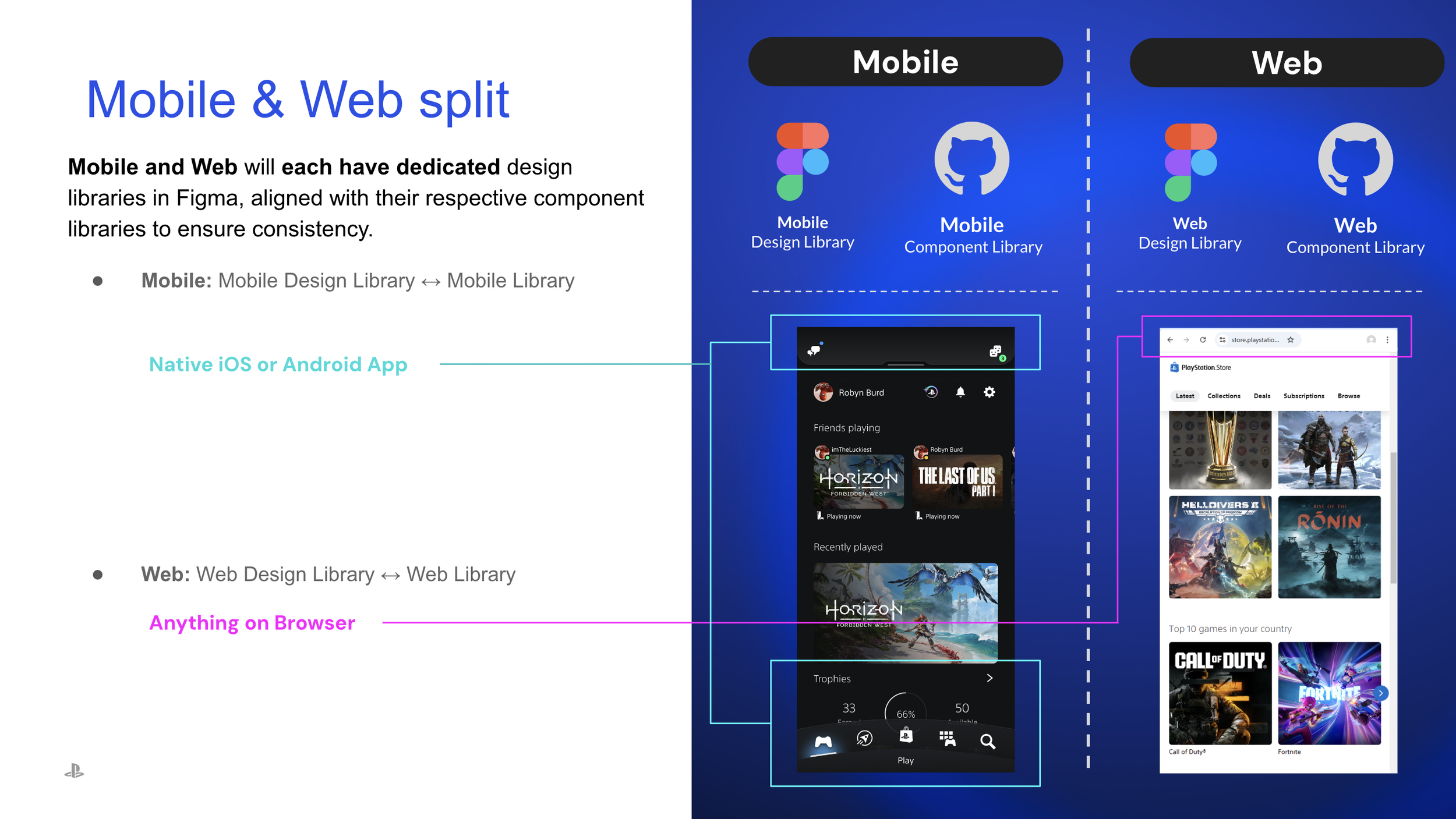PlayStation’s Design System
The Problem
The Mobile & Web Design Library lacked documentation and parity with the GitHub Storybook.
UX Designers and Engineers wasted time cross-referencing libraries, leading to inefficiencies.
User sentiment
Quote Source
“Mobile/Web seems out of date/inconsistent with what's in production, missing a lot of components, and requires lots of cross-referencing with documentation and screenshots.”
Quote Source
“It’s not clear what components are for web and what are for mobile. The developers are using other components, and the final product is unlike the original design.”
Process & Solution
Work we did
🔎 Phase 1: Audit & Inventory
Conducted a full audit of the Mobile & Web Design Library.
Created an inventory of all web interfaces & libraries.
Analyzed inconsistencies and gaps.
What was found
📌Phase 2: Identifying Key Issues
60% lack of parity within web components.
~330 hours wasted customizing components in the code.
Mobile & Web components were mixed in Figma, while GitHub libraries were independent.
How we solve it
✅Phase 3: Implementation & Standardization
Built a Web-only Design Library in Figma for clearer separation.
Aligned nomenclature and properties with each GitHub Library.
Introduced design tokens for scalable updates and consistency.
Let’s take a look
Documentation
📖 Phase 4: Documentation & Guidelines
Created dedicated documentation for each platform, including:
Clear property & token explanations.
Component usage guidelines with Do’s & Don’ts.
Image examples for clarity.
Accessibility constraints & WCAG 3.0 rules.
🚀 Impact & Results 🚀
📊 Efficiency Gains
Reduced cross-referencing time for designers & engineers.
Improved component adoption rates in Figma.
🤝 Stronger Collaboration
Worked closely with engineers, PMs, POs, and designers to align needs.
Standardized communication between UX & development teams.
💡 Lessons & Next Steps
Implementing continuous tracking of component adoption.
Expanding documentation to cover edge cases & custom implementations.
Figma statistics after 60 days of adoption










